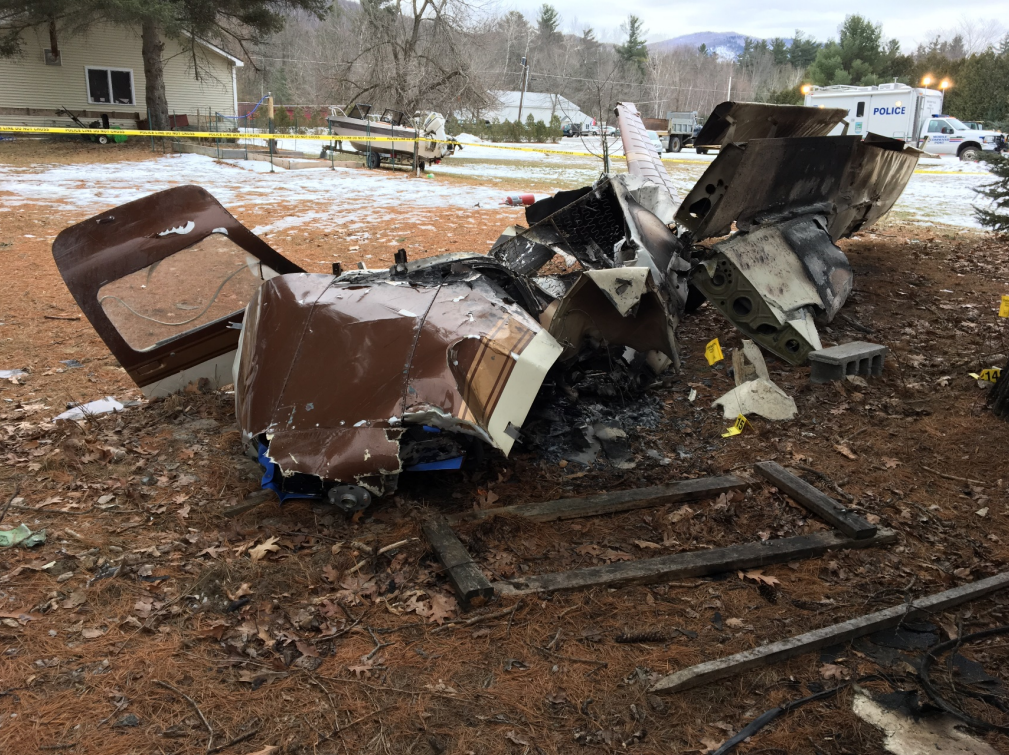
ASN Wikibase Occurrence # 213579
This information is added by users of ASN. Neither ASN nor the Flight Safety Foundation are responsible for the completeness or correctness of this information.
If you feel this information is incomplete or incorrect, you can submit corrected information.
| Date: | Friday 23 December 2016 |
| Time: | 11:45 |
| Type: |  Piper PA-28-161 Warrior |
| Owner/operator: | PC Air Ventures Ltd |
| Registration: | N31202 |
| MSN: | 28-7816552 |
| Year of manufacture: | 1978 |
| Total airframe hrs: | 8582 hours |
| Engine model: | Lycoming O-320 SERIES |
| Fatalities: | Fatalities: 1 / Occupants: 1 |
| Aircraft damage: | Substantial |
| Category: | Accident |
| Location: | near Middlebury State Airport (6B0), VT -
 United States of America United States of America
|
| Phase: | Initial climb |
| Nature: | Private |
| Departure airport: | Middlebury State Airport, VT (6B0) |
| Middlebury State Airport, VT (6B0) | |
| Investigating agency: | NTSB |
| Confidence Rating: |
The airplane had not been flown recently, and, before the personal flight, the private pilot cleared snow from the airplane's wings, charged the airplane's battery, and preheated the engine. He then performed a preflight inspection and drained the fuel tanks. The pilot taxied the airplane to the runway and departed. A witness reported that, during the initial climb, the airplane's wings "wagged," then the engine "skipped" and then "went back to normal." Another witness reported that he heard the engine "sputtering" and saw the airplane make a 180° turn back toward the runway. Both witnesses stated that the airplane then quickly descended. The observations of the witnesses are consistent with the pilot losing control of the airplane while attempting to return to the runway following a partial or complete loss of engine power.
Examination of the airframe and engine revealed no anomalies that would have precluded normal operation with the exception of the right fuel cap, which remained seated but its gasket exhibited cracking. Although there was no contamination noted in the fuel system during the engine examination, it is possible that water had leaked through the cracked fuel cap gasket and was not completely drained during the pilot's preflight inspection. Then, following the wings being "wagged," the remaining water entered the fuel system and resulted in a partial or total loss of engine power. In response to the power loss, the pilot attempted to return to the runway; however, during the turn, the pilot failed to maintain sufficient airspeed, which resulted in the airplane exceeding its critical angle of attack and entering an aerodynamic stall. The pilot's decision to return to the runway was contrary to FAA guidance that recommended continuing straight ahead following an engine failure on takeoff.
The pilot did not hold a medical certificate and had a history of seizures. However, it is unlikely that the pilot had a seizure at the time of the accident as he was taking the medication levetiracetam to prevent seizures, and a seizure would have led to sudden incapacitation, which is inconsistent with the witness observations that indicate an intentional return to the airport. The pilot had been maintained on levetiracetam since 2010 without a complaint about somnolence; therefore, it is unlikely his use of this medication contributed to the accident. Tramadol was identified only in the pilot's urine, which indicated it was used many hours to days before the accident and was no longer present at impairing levels at the time of the accident. Overall, there was no evidence of a medical condition or medication that contributed to the circumstances of this accident.
Probable Cause: The pilot's improper decision to return to the airport following a partial or complete loss of engine power during takeoff initial climb and his failure to maintain sufficient airspeed while maneuvering, which resulted in exceedance of the critical angle of attack and an aerodynamic stall.
Accident investigation:
 |
|
Sources:
NTSB
Location
Images:

Photo: NTSB
Revision history:
| Date/time | Contributor | Updates |
|---|---|---|
| 22-Jul-2018 18:50 | ASN Update Bot | Added |
| 22-May-2022 21:44 | Captain Adam | Updated [Aircraft type, Operator, Location, Phase, Departure airport, Destination airport, Narrative, Category, Photo] |
Corrections or additions? ... Edit this accident description
The Aviation Safety Network is an exclusive service provided by:


 ©2024 Flight Safety Foundation
©2024 Flight Safety Foundation